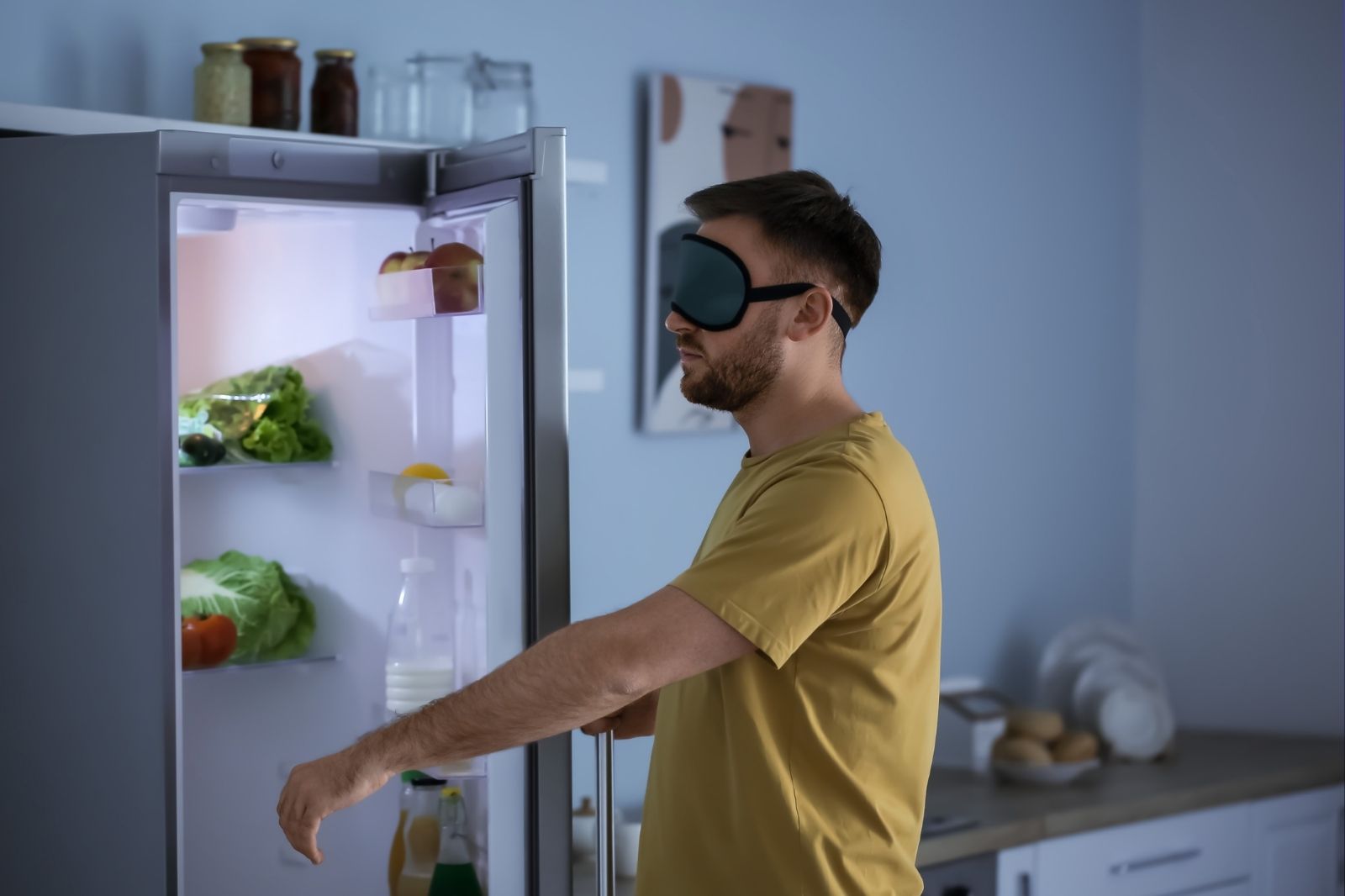Sleepwalking Safe Bedroom Tips

Sleepwalking can be a strange and potentially dangerous sleep disorder. For those who have loved ones or who sleepwalk themselves, creating a safe environment in the bedroom is essential to prevent injuries. Follow these sleepwalking safety tips to transform your bedroom into a secure, and comfortable, space.
Understanding Sleepwalking
Sleepwalking, or somnambulism, is a type of parasomnia, a category of sleep disorders involving abnormal behavior during sleep. Typically, it occurs during the deep, non-REM stages of sleep, when the brain is partially awake but not fully alert. Sleepwalkers may perform routine activities such as walking around the house, opening doors, or even eating, all while appearing awake but with no conscious awareness. The most important thing to know is that sleepwalkers are not aware of their actions and cannot control them.
Sleepwalking Safety Tips for the Bedroom
Lock Doors and Windows
One of the most critical safety measures is to secure the bedroom’s entry and exit points. Make sure that doors and windows are locked to prevent a sleepwalker from wandering outside. Install childproof locks or safety latches on windows and doors if necessary. Ensure that any sliding doors have secure locks or bars. Adding window sensors or alarms that sound if the window is opened can also help alert you.
Remove Sharp Objects
Clear the room of any sharp or potentially harmful items. This includes anything from glass lamps and picture frames to sharp-edged furniture and other objects that a sleepwalker might bump into or try to pick up. If you can’t remove these items completely, consider padding corners or placing soft covers over anything that could cause injury.
Keep the Floor Clear
A clutter-free floor is essential to prevent tripping hazards. Sleepwalkers are often unaware of their surroundings. Keep the floor clear of shoes, clothing, and other objects. Consider using storage solutions like under-bed bins or closed cabinets to keep personal items out of the way.
Install Safety Gates
If your bedroom is on an upper floor or near stairs, installing safety gates can prevent a sleepwalker from accidentally falling down stairs. Safety gates that are easy for adults to open but difficult for a sleepwalker to navigate. Make sure the gate is secured properly and can withstand any pressure exerted against it.
Install Door Alarms
An audible door alarm can be a game-changer. These alarms can be installed on doors or even on windows to alert you or jolt a sleepwalker awake. It can be a useful early-warning system that gives you a chance to intervene and ensure their safety.
Consider a Sleepwalking Alarm System
Advanced technology can assist with sleepwalking prevention. Some sleepwear brands and wearable devices are designed to alert the sleeper or a caregiver when sleepwalking is detected. These can range from smartwatches that vibrate when unusual movement is detected to more advanced systems that alert caregivers through a smartphone app. These tools may be particularly beneficial for sleepwalkers who are at a higher risk of getting up frequently during the night.
Secure Heavy Furniture
Tall or heavy furniture should be secured to the wall with anti-tip straps or brackets to prevent it from toppling over if a sleepwalker bumps into it. This includes bookshelves, dressers, or other tall pieces.
Keep the Bedroom Cool and Comfortable
Sleepwalking is more common when a person is restless or experiences disrupted sleep. Ensure that the bedroom is comfortably cool in temperature and free of excessive noise. Use blackout curtains to keep light levels low and consider white noise machines to block out external sounds.
When to Seek Professional Help
If sleepwalking becomes a frequent or dangerous occurrence, it’s wise to seek the help of a medical professional. Sleep specialists can conduct a sleep study or provide personalized strategies to manage the behavior. Lifestyle changes such as improving sleep hygiene, managing stress, and keeping an up-to-date sleep diary can also make a difference.
Final Thoughts
Creating a safe bedroom for a sleepwalker is all about anticipating potential hazards and minimizing risk. While it’s not possible to prevent sleepwalking entirely, these safety tips can help reduce the chance of injury. Remember, the key is to be proactive—implement these changes today and give yourself the peace of mind you deserve.
Why Trust Us?
At The Sleeping Institute, we're dedicated to transparency, impartiality, and accuracy in every article we publish. Our reviews are based on comprehensive analysis and firsthand experience. Staying current with the latest advancements in sleep technology, we offer up-to-date, reliable, and unbiased information to help you make informed decisions for a better night's rest. Let us be your trusted guide in the ever-evolving world of sleep technology!